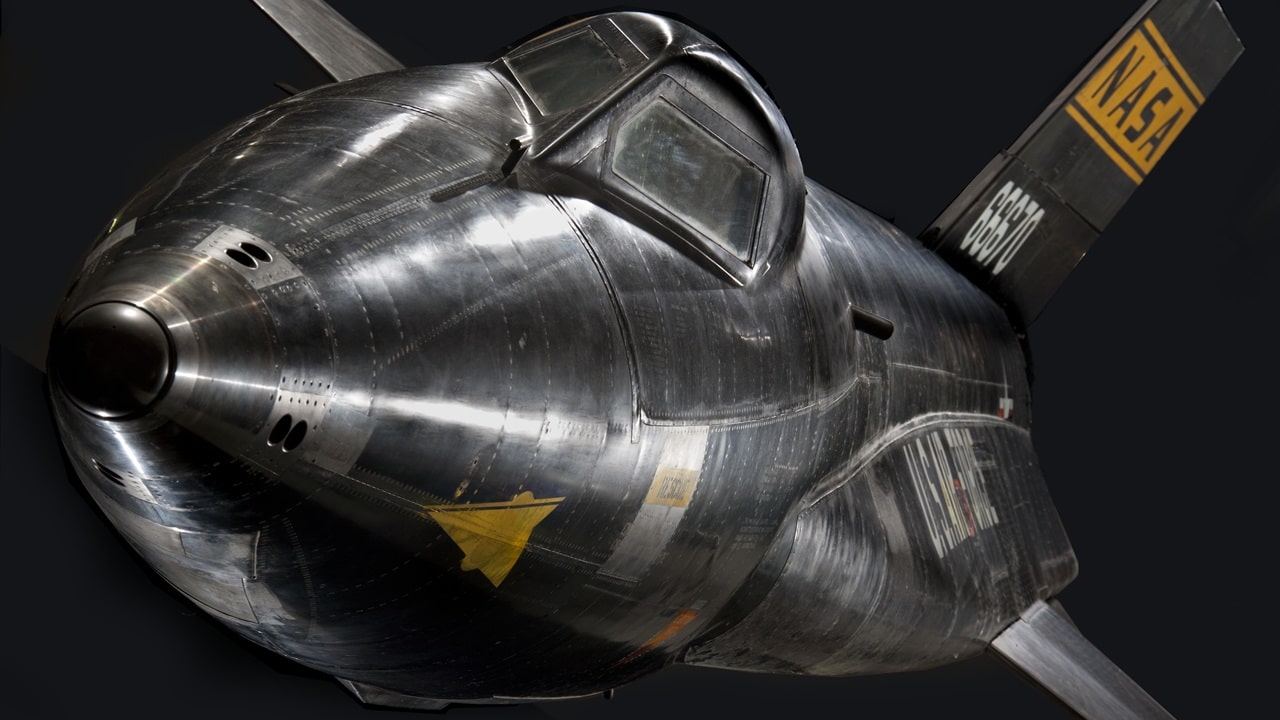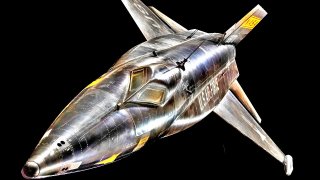X-15: The Mach 6.7 Plane That Smashed the Record Books to Pieces
On October 3, 1967, William J. "Pete" Knight made the history-defining X-15 moment when he set the record for fastest manned aircraft reaching Mach 6.70 or 4,520 miles per hour.
Last month marked the 65th anniversary of the arrival of the X-15 hypersonic spaceplane, which was developed as a joint project among NASA, the United States Air Force, and U.S. Navy.
On October 15, 1958 the first of the aircraft rolled out of its factory and it helped expand America's knowledge of flight at speeds exceeding Mach and altitudes above 250,000 feet.
According to NASA, between 1959 and 1968, 12 pilots completed 199 missions, achieving ever-higher speeds and altitudes while gathering data on the aerodynamic and thermal performance of the aircraft flying to the edge of space and beyond and returning to Earth. As the first operational "spaceplane," the X-15 reached 100 km above the Earth's surface and flew at six times the speed of sound.
Even more remarkable is that the aircraft was developed just 64 years after the first powered flight at Kitty Hawk.
The X-15's purpose was to fly high and fast and to subject pilots to conditions that future astronauts would face. It was the world's first piloted aircraft to reach edges of space as well as hypersonic speeds that were more than five times the speed of sound.
However, during the nearly decade long series of tests, the program experienced several mishaps and one fatal crash. Yet, the knowledge gained during X-15 missions influenced the development of future programs such as the space shuttle.
As NASA recalled, the origins of the X-15 program dated to 1952, when the Committee on Aerodynamics of the National Advisory Committee for Aeronautics (NACA) – the forerunner of NASA – adopted a resolution to expand their research portfolio to study flight up to altitudes between 12 and 50 miles and Mach numbers between 4 and 10.
Both the U.S. Air Force and U.S. Navy joined the feasibility studies.
In late December 1954, the Air Force released a Request for Proposals (RPF) for aerospace firms to bid on building the experimental hypersonic aircraft. Four companies submitted proposals with the Air Force, which ultimately selected North American Aviation, Los Angeles, as the winning bid on Sept. 30, 1955, awarding the contract that November.
X-15 Was an Air-Launched Rocket
To describe the North American X-15 a spaceplane is a misnomer, as it resembled a rocket more than a traditional aircraft.
Yet, it couldn't actually take off from the ground. Rather the X-15 was carried by specially modified B-52 Stratofortress, which served as a "mothership."
The modified bomber flew to an altitude of 45,000 feet (approximately 14,000 meters) and then airdropped the X-15, after which the rocket-plane would ignite its engines.
Instead of using traditional steering, pilots had to rely on the craft's rocket thrusters during flight. Once its powerful rocket ignited, the experimental aircraft streaked upward to the limits of the atmosphere, where it then glided unpowered to land on a dry lake bed.
A total of three X-15s were built, and combined made 199 flights between 1959 and 1968.
On October 3, 1967, William J. "Pete" Knight made the history-defining X-15 moment when he set the record for fastest manned aircraft reaching Mach 6.70 or 4,520 miles per hour.
While fast, the X-15 – which could streak towards the upward limits of the atmosphere – was by no means a long-distance aircraft.
Typical flights lasted only about 10 minutes, and after burning its fuel, it would glide unpowered back to Earth and land on a dry lake bed. That was necessary as the aircraft's nose landing wheel lacked steering and the main landing gear employed skids.
Among the pilots who flew the X-15 was Neil Armstrong, who had gained experience flying the X-1B supersonic rocket plane. He was the first X-15 pilot and flew the aircraft a total of seven times.
Hard Landings?
The Rogers Dry Lake adjacent to Edwards and Dryden was the intended landing location for all flights, while there were numerous emergency lakebeds selected in advance for "emergency landings" – of which there were several. There were also two notable accidents during the program.
The first occurred on Nov. 9, 1962, when test pilot Jack McKay experienced an engine failure and landed at Mud Lake, Nevada. His aircraft's landing gear collapsed, flipping him and the aircraft on its back. Although he recovered sufficiently to fly again, and in total completed 29 flights in the X-15 – the most of any NASA pilot – he eventually was forced to retire from the injuries he received in that accident.
Five years later, on Nov. 15, 1967, during test pilot Michael Adams' seventh flight, his aircraft entered a spin from which he was able to recover; however, he could not bring the X-15 out of an inverted dive because of a technical problem with the adaptive flight control system.
He died in the resultant crash of the X-15 number three prototype.
Legacy of the X-15
During its decade of tests, the X-15 program helped spearhead research in a variety of areas including hypersonic aerodynamics, winged reentry from space, life-support systems for spacecraft, aerodynamic heating and heat transfer research, and earth sciences experiments.
A total of 700 technical documents were produced from the test flights of the X-15, equivalent to the output of a typical 4,000-man federal research center for more than two years.
Today, two of the three prototypes are now preserved in museums.
The first X-15 built by North American Aviation currently hangs in the Smithsonian Institution's National Air & Space Museum; while the second – and fastest of the three – is now in the collection of the National Museum of the United States Air Force at Wright Patterson Air Force Base (AFB), Dayton, Ohio.

In addition, a North American Aviation mockup that was used as a construction guide for the building of the three X-15 prototypes is now in the collection of the Pima Air and Space Museum, Pima, California. It has been modified to represent X-15A2 with the addition of two external fuel tanks.
The museum is also home to "Balls 8," the NASA Boeing NB-52B mothership that was retired in 2004 after almost 50 years of flying service with NASA.
Author Experience and Expertise
Peter Suciu is a Michigan-based writer. He has contributed to more than four dozen magazines, newspapers, and websites with over 3,200 published pieces over a twenty-year career in journalism. He regularly writes about military hardware, firearms history, cybersecurity, politics, and international affairs. Peter is also a Contributing Writer for Forbes and Clearance Jobs. You can follow him on Twitter: @PeterSuciu.
All images are Creative Commons.


